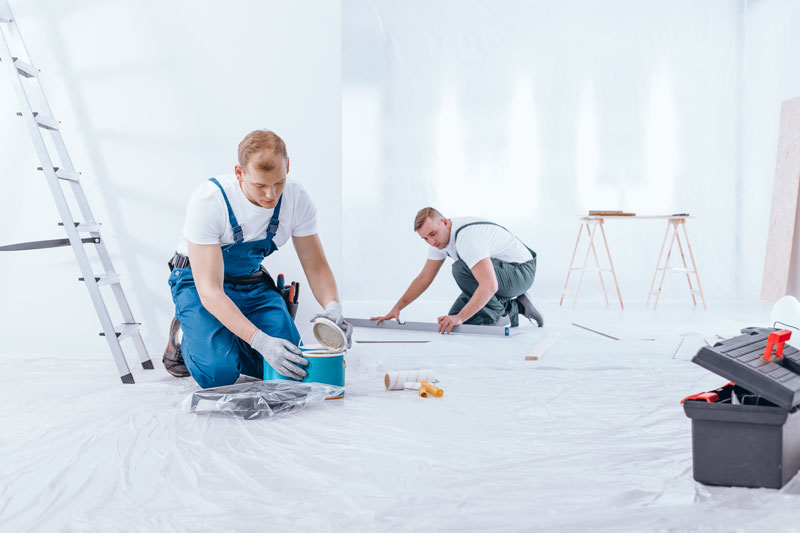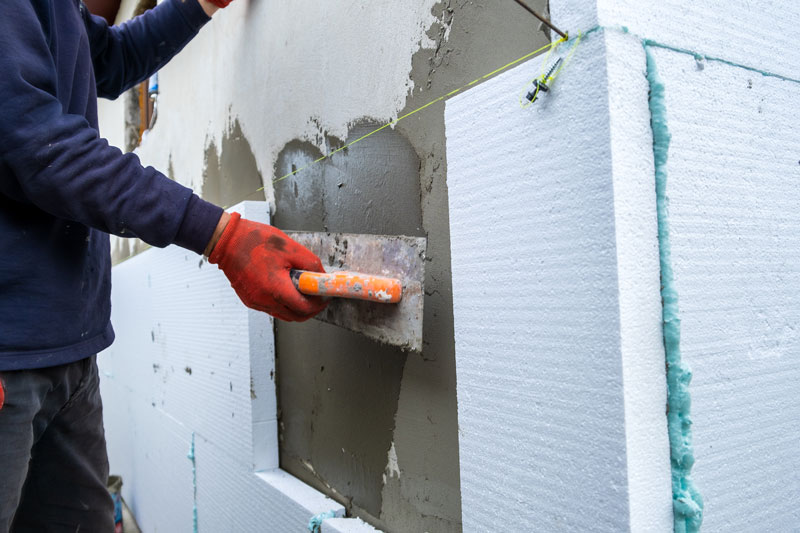Wall insulation
Keep Heat Inside
Wall insulation can be an excellent addition product in the fight against heat loss. There are several ways that you can increase the insulation capabilities of your walls from external wall insulation which can be fitted onto the outside of your living space known as EWI or you line the internal walls with additional insulation in the form of foam insulation sheets or plasterboard sheets fitted with added insulation foam. Another great product is insulation paint an excellent product for increased insulation with minimum remodelling.

Interior acrylic paint offers the perfect balance of excellent quality and maximum performance
Emulsion paint has a noticeably superior texture, finish and very low VOC levels, together with an incredible combination of thermal insulation and breathability. This dramatically reduces condensation problems, if not eliminating them entirely. Applying a minimum of two coats of acrylic paint on walls and ceilings provides maximum thermal insulation.
Cavity Wall Insulation
There are many benefits to having cavity wall insulation (CWI) in your home. According to the Energy Saving Trust, uninsulated walls account for almost a third of the heat lost from a home. That means fitting cavity wall insulation is a great chance to slash your energy bills and save energy at home. It’s also one of the most cost-effective and long-lasting upgrades you can make.
If your home’s got cavity walls, fitting cavity-wall insulation can be one of the most cost-effective ways to improve your home’s energy efficiency and reduce your energy bills.
Modern masonry homes are built using cavity walls, which typically feature an inner blockwork wall, a cavity and an outer wall of brick or rendered blockwork. The gap in between the layers is filled with energy-saving insulation to Building Regulations standards. Older houses might have cavity walls but no insulation, resulting in a colder property and not as energy efficient as it could be. Thankfully, existing cavity walls can be filled with insulation without needing to be rebuilt.
What types of cavity wall insulation are there?
These are the best materials for insulating your home...
1. Blown mineral wool insulation
Mineral wool can be blown into a property’s cavity walls to form an energy efficient insulating layer. It’s cost-effective and offers good performance. The cavities need to be clean and free from obstruction, otherwise the insulation may get caught and prevent a full fill.
2. Polystyrene bead insulation
This method involves blowing small balls of expanding polystyrene insulation (EPS) into existing cavity walls through small holes. Beads are quick to install, high performing and don’t absorb moisture. 'One advantage of beads is that a long nozzle can be used that shoots the insulation into hard-to-reach areas,' says Ed Andrews, Commercial Director at cavity wall insulation supplier InstaGroup.
3. Injected foam insulation
Polyurethane (PU) foam can be pumped into a cavity wall, where it will solidify and form a thick, water-repellent insulating barrier with impressive thermal performance. This option isn’t as commonplace, and the Insulation Assurance Authority (IAA) doesn’t cover it under its guarantee scheme. There are situations where it makes sense, however, for instance if a property is in a flood risk area or has uneven cavities
4. Cavity insulation for new walls
Sheets of insulation are fitted straight into the cavity as new brick and block walls are built. Semi-rigid batts or slabs of mineral wool or rigid PIR boards are the most popular options, available in different thicknesses to achieve the desired performance level. Partial fill solutions leave a 25mm-50mm gap between the cavity and external wall to reduce the chance of moisture tracking into the home.
External Wall Insulation
External wall insulation is third potential way to insulate the walls of your home, the other options being cavity wall insulation and internal insulation. The right solution for you will be determined by the makeup of your property and its location – an experienced and approved installer will be able to survey your home and decide which is best.

Adding external wall insulation (EWI) to your house is an effective way to reduce the amount of energy needed to heat your home, saving you money on energy bills as well as lowering your carbon footprint.
The best way to make your home more energy efficient is to improve the fabric of the house, such as the walls. Make insulation as good as it can be to the get the best from the structure.
External wall insulation is the go-to option to upgrade the thermal efficiency of homes with solid walls, made using a single layer of bricks. Most UK houses built before 1920 have solid walls and EWI is a great option if there are no planning restrictions on the property, such as listed building or conservation area status.
Uninsulated walls allow around a third of the warmth pumped into a house to leak out. Making your central heating system work harder to maintain a comfortable temperature. External and cavity wall insulation will help to keep heating costs low because your boiler won’t need as much energy to keep a cosy environment.
Adding effective insulation means you’ll not only be spending less on heating bills, but you’ll also be using less fossil fuel. So external wall insulation can help to improve the sustainability credentials of your home. If you then install renewable tech to run your central heating, you’ll benefit from an even more environmentally friendly property.
Installing EWI doesn’t disrupt things inside your property in the way that internal insulation would, so you can easily live in the house during the work. It can also help to improve weatherproofing and sound resistance.
Adding external wall insulation is a good opportunity to update the appearance of your home. You could make it look pretty much identical to how it was previously or make some improvements to boost your house’s kerb appeal, possibly even increasing its value.

